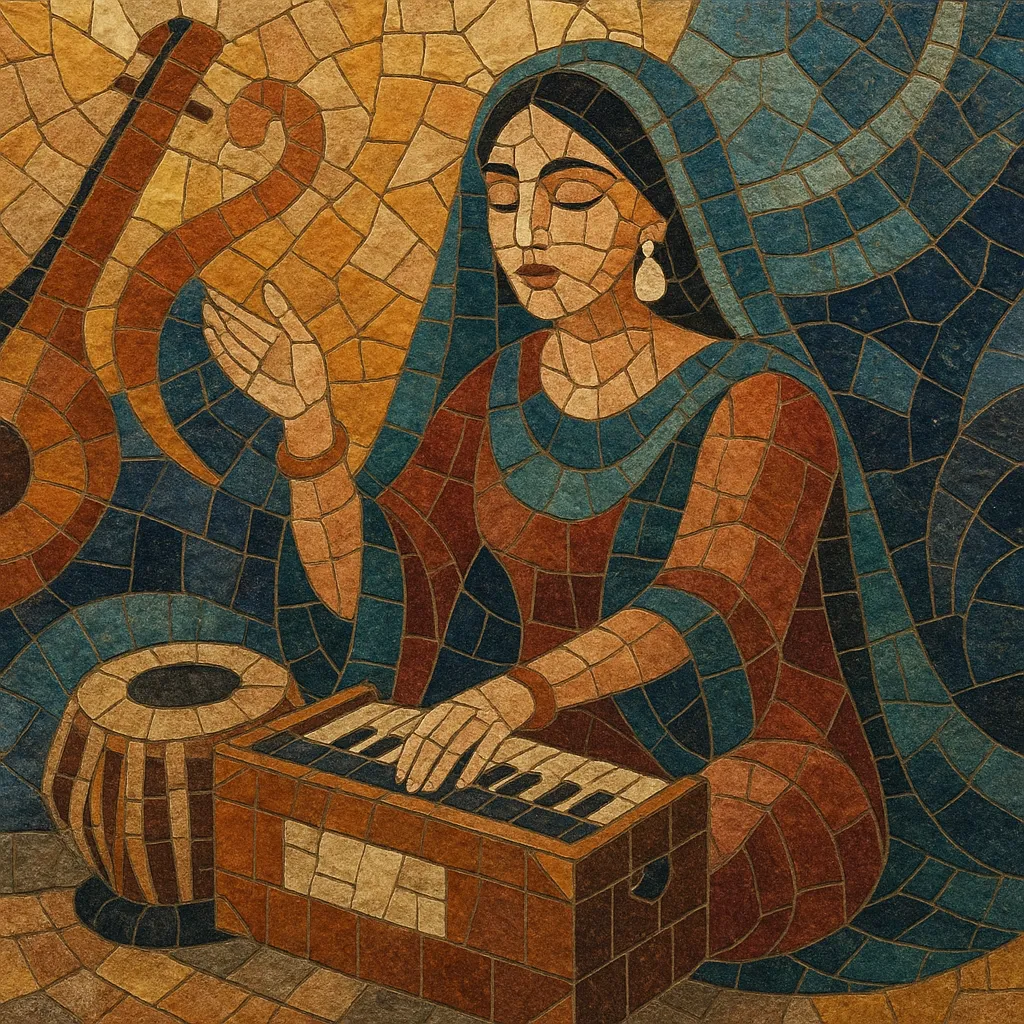Ghazal is a South Asian light-classical vocal genre built around the Urdu–Persian poetic form of the same name. It sets couplets (sher) that share a rhyme (qaafiya) and refrain (radif), often opening with a matla and ending with a maqta featuring the poet’s takhallus. Themes revolve around love, longing, separation, metaphysical yearning, and refined wit.
Musically, ghazal draws on Hindustani classical grammar but prioritizes text clarity and melodic expressiveness over elaborate improvisation. Performances commonly feature a singer accompanied by harmonium and tabla (with sarangi, sitar, or guitar as color), use raga-informed melodies, and keep lilting tala cycles such as dadra (6 beats) or keherwa (8 beats). The style favors intimate delivery, subtle ornamentation (meend, murki), and immaculate diction, making it ideal for salon (mehfil) settings as well as recorded and film music.
The ghazal poetic form emerged in the Arabic world and flourished in Persian literature, later traveling east with Sufi and courtly cultures. In the Indian subcontinent, the genre took root in North Indian courts where Urdu developed as a literary language. By the late Mughal period (18th century), musicians began setting ghazal poetry to raga-informed melodies, cultivating a refined style distinct from heavier classical forms.
In Lucknow and Delhi, mehfil culture nurtured an intimate, text-forward approach, aligning ghazal with light-classical idioms close to thumri. The British colonial period expanded urban music salons and early recording opportunities. Singers adapted classical technique to concise, emotive renditions that highlighted poetic nuance and accessible melodic contours.
The advent of radio, gramophone, and cinema elevated ghazal to mass appeal. Early film-era vocalists and later icons in India and Pakistan shaped a modern ghazal sound with harmonium–tabla accompaniment, gentle guitar/strings, and studio polish. From the 1970s–1990s, performers such as Mehdi Hassan, Ghulam Ali, and Jagjit Singh brought the genre to international audiences, standardizing the concert format and repertoire.
Today, ghazal thrives in concerts, recordings, and fusion contexts. While many artists retain raga-based frameworks and traditional talas, others incorporate modern harmony, keyboards, and pop production. The poetic core—qaafiya/radif structure, layered metaphor, and emotional subtlety—remains central, sustaining the genre’s signature intimacy and timeless appeal.


